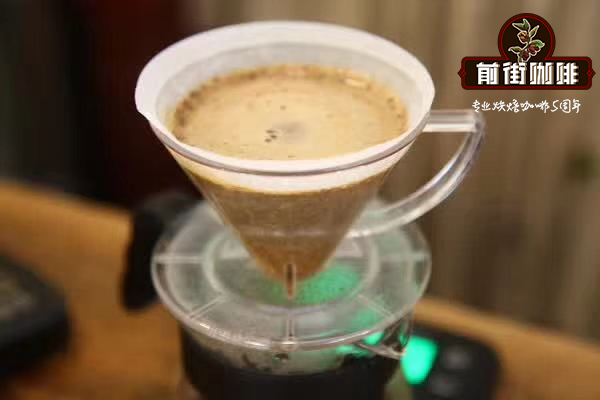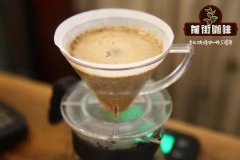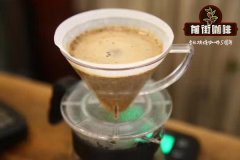What are the different methods of coffee treatment? what are the differences in the flavor of coffee?
Tanning is a traditional method for the initial processing of coffee beans, and at present, almost all coffee-growing countries such as Ethiopia and Yemen still use solarization to treat raw beans.
The sun treatment will first spread the ripe or half-ripe beans in the drying farm for natural drying. The specific time depends on the local climatic conditions, which usually takes two to four weeks.
When the moisture content of coffee beans is reduced to 12%, you can use a sheller to grind off the hard pulp and silver skin.
The sun treatment has a very high requirement on the climate, and if you encounter a rainy day in the sun, it will make the beans moist and moldy. When drying raw beans in the sun, the color is yellow, and the center will be brown after baking, rather than the white of washed beans.
Sun beans have relatively better sweetness and mellow thickness, while less sour taste, but the quality is more unstable, there will be greater fluctuations. Because of the low cost of tanning, it is widely used not only in Ethiopia and Yemen, but also in Robusta coffee grown in Africa and Indonesia.
Half-sun treatment
In order to improve the quality of coffee in Brazil, the Brazilian government has invented half-sun method and vigorously promoted it. At present, almost all high-quality coffee beans in Brazil use half-sun method to treat raw beans. It can be said that half-sun method has successfully improved the overall quality of Brazilian coffee.
The pre-treatment method of half-sun method is almost the same as that of water washing.
Choose beans: first put the coffee fruit into a large water tank, remove the floating fruit, and then put the sunken fruit into the pulp sieving machine to remove the pulp. To better remove the immature fruit, it is more important to let the coffee beans dry in the sun no longer with pulp, but only wrapped in a layer of pectin, which is more helpful to control the subsequent fermentation process.
Drying: move the beans to the bean drying farm to dry, about 3 days to achieve a certain degree of dryness
Drying: further drying in a dryer until the water content of the beans reaches 10.5% Murray 12%.
Polishing: the final polishing process is carried out before the beans are bagged and exported.
Because the half-sun method has certain requirements for climate and technology, it can only be widely used in Brazil. Through half-sun treatment, it not only retains the unique sweet taste of the sun method, but also avoids the mildew taste of the sun method, shaping the unique flavor of Brazilian coffee.
Washing treatment
Coffee washing began in the mid-18th century. In the washing process, the pulp of the coffee fruit (red cherry) is first removed, then the residual mucous membrane on the inner pericarp is removed by a fermentation tank, and the beans are washed and dried. The difference between the non-washing method and the water washing method is that the non-washing method is to remove the pulp after drying, while the washing method is to remove the pulp before drying.
The water washing method can remove impurities (stone or garbage, etc.) and defective beans through each step, so the appearance of raw beans is uniform, is generally considered to be of high quality, and the trading price is higher than that of coffee beans refined by natural drying.
However, the more detailed the division of labor, the more procedures for operation and hygiene management, and the higher the risk, so washing is not necessarily equal to high quality. The biggest disadvantage of washed coffee is that coffee beans are prone to the stench of fermentation during fermentation. Some coffee experts point out: "A fermented coffee bean will spoil 50 grams of beans." Beans will be stained with the smell of fermentation, most of which are due to the lack of management and maintenance of the fermentation tank. Soaking the coffee beans with mucous membrane on the endocarp in the fermentation tank for one night can remove the mucous membrane. However, if the microbes in the fermentation tank change, it will cause the coffee beans to be stained with fermented flavor.
In addition, the equipment cost of coffee washing method is high, the washing steps are also quite time-consuming, and the production cost is relatively higher.
Washing steps:
1. Choose beans: put the harvested fruit in a water tank and soak for about 24 hours. At this time, ripe fruit will sink, while immature and overripe fruit will float up and can be removed.
two。 Remove the pulp: use a machine to remove the skin and pulp, leaving only the coffee beans wrapped in the endocarp. At this time, there is a layer of mucous membrane on the outside of the beans, and the process of washing is to wash this layer of mucous membrane.
3. Hair alcohol: the adhesion of the mucosa is very strong, and it is not easy to remove. It must be placed in the slot for about 18-36 hours to make it alcohol and decompose the mucosa. There are two methods of fermentation, namely wet hair alcohol and dry hair alcohol, as the name implies, the former adds water, the latter does not add water. In the process of producing alcohol, the seeds and internal pulp will produce special changes, which is one of the steps that most affect the flavor of coffee. Some farms add hot water or alkanolins to speed up the production of alcohol, which has a negative impact on the quality of coffee beans and is not popular with selected coffee lovers.
4. Washing: farms that use the washing method must build washing ponds and be able to introduce an endless supply of running water. During the treatment, the finished beans are put into the pool and passed back and forth, using the friction of beans and the power of running water to wash the coffee beans until smooth and clean.
5. Drying: after washing, the coffee beans are still wrapped in the pericarp with a moisture content of 50%. They must be dried to reduce the moisture content to 12%, otherwise they will continue to be mellow, moldy and rotten. The better treatment is to use sunlight to dry, although it will take 1-3 weeks, but the flavor is very good and very popular. In addition, machine drying is used in some places, which greatly shortens the processing time and makes the flavor not as good as that of sun-dried coffee.
6. Shelling: dried beans can be stored in a warehouse or handed over to the factory for shelling to remove endocarp and silver film.
7. Selection and grading: like the sun-drying method, washed coffee has a process of picking and grading, which is used to remove defective beans, ensure better quality, and then give them to exporters to sell around the world.
Semi-washing
Semi-washing is a relatively new and rare method. This method is also suitable for processing local coffee only in specific areas of some countries where there is a long drying period in the climate. The coffee produced by this method is sticky, and the mucus is not removed with fermentation in the tank. Therefore, the coffee produced by this semi-wet treatment contains the characteristics of both wet treatment and drying treatment. The acidity, sweetness, seasoning, and flavor of such coffee are quite good; the only drawback is that the taste of such coffee is not as strong as that produced by pure drying or washing.
Bean selection: first put the coffee fruit into the big water tank, move the red fruit and semi-green and semi-red fruit into the pulp sieving machine to remove the pulp and impurities.
Remove pectin: take out the coffee beans, do not need to take the sun, let alone pour into the sink to ferment, but directly into the next pectin scraper, only a small amount of water can scrape away the sticky pectin chips mechanically.
Sun exposure: then take out the raw beans with a smooth surface and expose them outdoors until the water content is reduced to 12%.
Wet planing treatment
Wet planing (Wet-Hulling) is the traditional treatment of Indonesian Sumatran coffee, that is, when the raw beans are half-dried and the moisture content is as high as 30% and 50%, the seed shells are removed first, and then continue to be dried in order to solve the dilemma of drying for too long. As the drying time is shortened to two to four days, the fermentation period of coffee beans is shortened, and the acidity decreases much, but the relative thickness increases, with obvious aromas of caramel and fruit, even with aromas of herbs or grass and wood. this is the unique regional fragrance of Sumatra.
However, the effect of early removal of the seed shell is that the raw beans are half dry without the last two layers of protection (note: coffee beans' four layers of protection: pericarp, pectin, seed shell, silver skin), which is like taking off your clothes and basking in the sun. Although the wet planing method solves the problem of drying time, the relative probability of raw beans contaminated by molds, fungi and yeasts is also greatly increased. Paradoxically, however, these factors have become the key factors in creating Manning's special aroma.
Another feature of the wet planing method is the increase in the probability of the so-called "sheep's hoof beans". Because the raw beans are planted with a shell planer in the semi-soft stage when they are still very wet, the fragile soft wet raw beans are very easily cracked, broken or scratched by mechanical force, resulting in the so-called sheep's foot beans and scratched beans, resulting in the deterioration of the selling phase of raw beans.
Honey treatment method
The so-called honey treatment (Miel Process in Spanish) is said to refer to the process of making raw beans by sun-drying with mucous membranes. After the outer pulp of the coffee bean is removed, there will be a layer of sticky jelly. The traditional method of washing is to wash it off with clean water, but because of the limitation of water resources in some high-altitude areas, there is this way of direct drying.
The honey treatment process is vulnerable to pollution and mildew, so it needs to be closely watched throughout the process, constantly turning, and speeding up drying, so as to avoid bad fermentation flavor. Its advantage is that it can best preserve the original sweet flavor of coffee ripe fruit, making the coffee show elegant black sugar flavor and drupe flavor, while the berry flavor also supports the basic aroma of red wine, which is considered to be a very elegant product.
The popularity of honey-treated coffee beans is largely due to their sweet and thick characteristics, which are very suitable for Espresso production in cafes. In recent years, more and more coffee beans are called "Miel Process", and they have also become a favorite material for international coffee contestants.
According to the proportion of pectin retained and the drying method, it can be divided into:
White Honey honey 80% mae 90% pectin was removed.
Yellow Honey yellow honey retains 50% pectin and has no fermentation.
Red Honey red honey basically retains all pectin and has no fermentation.
Black Honey black honey basically retains all pectin and dries at a slightly higher temperature at low altitude. It is covered with slight fermentation in the first 24 hours, and then the drying process is transferred to an African drying bed for drying.
Gold Honey Golden Honey basically retains all pectin, drying at low temperature at high altitude, prolonging drying time.
Pressure honey treatment is now very ramming anaerobic treatment or called anaerobic fermentation!
That is the pressure honey treatment, which is the same as making red wine, put the removed coffee pulp and pectin coffee beans into a stainless steel bucket to ferment, the pressure in the barrel fermentation rate becomes very slow, so that the coffee has more sweetness and wonderful acid value! This is the ultimate goal!
Carbon dioxide impregnation is a new treatment method used in red wine treatment, in which the whole grape is put into carbon dioxide gas to make it oxygen-free. In this way, even in the absence of yeast, the grape fruit itself will convert its own sugar into alcohol, thus bringing a special aroma, the wine produced by this method has soft aroma, rich taste and stable color.
So how do you apply it to coffee?
1) remove the pulp and peel of the coffee beans and put them in a stainless steel container-why choose a stainless steel container? Sasa said that stainless steel containers can guarantee a cleaner flavor. Then different temperatures are controlled to affect the speed of the reaction.
2) put the stainless steel container in a room where it is easier to control the temperature, and they found that if you need more complex acid in the beans, the temperature should be controlled at 4-8 °C, and if the beans are needed to have higher sweetness, the temperature should be controlled to 18-20 °C.
3) seal the fermentation barrel so that more aromas can be developed.
4) this is the most critical and important step. Add carbon dioxide to the fermentation bucket, which is denser than oxygen, thus squeezing out the air. This puts the coffee beans in an oxygen-free environment, because there is no oxygen, which slows down the decomposition of sugars in the pectin, while the pH value decreases at a slower rate.
With the help of carbon dioxide, the whole fermentation process will be extended by 3 days at 22 °C, and the fermentation time can be longer if the temperature is lower. Reduces the dry taste and acetic acid taste.

Important Notice :
前街咖啡 FrontStreet Coffee has moved to new addredd:
FrontStreet Coffee Address: 315,Donghua East Road,GuangZhou
Tel:020 38364473
- Prev

What are the different methods of coffee treatment? what are the differences in the flavor of coffee?
Tanning is a traditional method for the initial processing of coffee beans, and at present, almost all coffee-growing countries such as Ethiopia and Yemen still use solarization to treat raw beans. The sun treatment will first spread the ripe or half-ripe beans in the drying farm for natural drying. The specific time depends on the local climatic conditions, which usually takes two to four weeks. When the moisture of coffee beans
- Next

Coffee flavor characteristics of different counties in Kenya coffee region and its washed beans vs. sun-dried beans
Coffee is very different in every county in Kenya, which is divided into 47 counties. Coffee trees in Kenya are planted at an altitude of 1400 - 2000 meters and harvested twice a year. The growing areas include Ruiri, Thika, Kirinyaga, Mt. Kenya West, Nyeri, Kiambu and Muranga
Related
- Beginners will see the "Coffee pull flower" guide!
- What is the difference between ice blog purified milk and ordinary milk coffee?
- Why is the Philippines the largest producer of crops in Liberia?
- For coffee extraction, should the fine powder be retained?
- How does extracted espresso fill pressed powder? How much strength does it take to press the powder?
- How to make jasmine cold extract coffee? Is the jasmine + latte good?
- Will this little toy really make the coffee taste better? How does Lily Drip affect coffee extraction?
- Will the action of slapping the filter cup also affect coffee extraction?
- What's the difference between powder-to-water ratio and powder-to-liquid ratio?
- What is the Ethiopian local species? What does it have to do with Heirloom native species?

